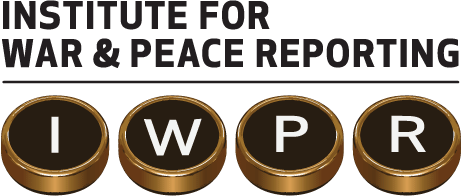Peaceful Opposition Continues Despite Militarization

Youssef Kanaan
“We revolted against tyranny because it poisons and disregards our lives,” says the poet and writer Mohamad Dibo, 36, explaining why he stopped actively participating in the uprising after the initial peaceful protest movement devolved into war.

“In a peaceful struggle, the probability of getting arrested is about ninety percent, with a ten percent chance of being killed,” he goes on. “But with the military option, these probabilities are switched, and this conflicts with my values because I consider life holy. This is what prompted me to distance myself.”
Following the formation of the Free Syrian Army, FSA, in July 2011, and the first major battles between the FSA and the regular Syrian army the following September in the province of Homs, warfare took centre stage in the struggle to overthrow the regime.
In addition to being arrested and tortured by government forces, many peaceful opposition activists like Dibo were turned off by the militarization of the opposition, which was becoming increasingly Islamist in nature. But other activists are still clinging to peaceful protest.
Basil, 25, is an activist from the town of Al-Qurayya in the Suweida province who works in the opposition media. He says the peaceful opposition movement is still strong within certain communities, especially among religious minorities. He offers Suweida, which is predominantly Druze, as an example.
“[Activists in] the villages and towns of Suweida, especially Al-Qurayya and Shahba, still distribute leaflets and hold demonstrations of hundreds of people,” says Basil, who blames the Arab and intrnational satellite channels for the marginalization of the peaceful protest movement.
So far, Suweida remains free of FSA. Local volunteers have formed their own groups, such as the Sultan Pasha Atrash battalion, which fights regime forces in the neighbouring province of Daraa.
Qais, 30, another media activist from Salamiyyah in the province of Hama, confirms that peaceful protests are still held in Syria, insisting that in his city it has only been slowed, not stopped, despite regime forces’ control of the area.
“Demonstrations that used to attract thousands now only consist of a few hundred, and last 15 minutes rather than several hours,” says Qais, attributing the decline to increased oppression by the regime forces.
Qais adds that people still hold peaceful demonstrations in areas controlled by the FSA, and that they are not limited to opposing the regime. Some protests have even ended in clashes between FSA militants and peaceful demonstrators who object to the insurgents’ practices. This shows that peaceful activists are still fighting militarism, he says.
In Aleppo, members of the FSA and Al-Nusra Front clashed with demonstrators in the neighbourhood of Bustan Al-Qasr in December of last year, and again this month in Saraqib, Idlib, elements of the Al-Nusra Front intercepted the protesters and tore up their Syrian revolutionary flag.
Many peaceful activists are also engaged in humanitarian work, which they consider vital to the revolution.
Ward, 29, turned from participating in demonstrations to assisting with relief work, providing psychosocial support for children in areas affected by fighting.
“The regime is responsible for driving some people away from the peaceful movement,” she says. “Either they picked up a weapon, abandoned the movement entirely, or they changed their strategy in other ways.”
Ward also holds the regime responsible for the emergence of extremist religious movements by creating an environment of ignorance and factional feuds.
The Future of Peaceful Protest in Syria
Activists agree on the importance of the peaceful protest movement, but their opinions differ regarding the future of this form of activism.
Reem, 23, a former peace activist from Aleppo, has now stopped any political activity. She refers to the latest confrontation between the militants and protesters in the Bustan Al-Qasr neighbourhood to express her fears for the peaceful opposition movement; it may collapse under pressure from all the armed groups, including both Islamist militant and regime forces, says Reem.
“I don’t know to how long peaceful activists will be able to face two adversaries at once, and these factions are in many respects two sides of the same coin,” she says.
“Activists who worked to expose some of the practices [of the armed opposition in Aleppo] were assassinated or sentenced to death, while others were arrested and tortured,” she continues. “This is the flip side of the Assad regime.”
Sarah, 21, from Salamiyyah, is more optimistic. She says the peaceful protest movement must regain the momentum it lost, despite the presence of armed groups who currently control the opposition.
“I’m sure that at least my friends, who shared my peaceful activism, aspire to the same,” she says.
For his part, Qais does not discount the role of the FSA in bringing down the regime, but he puts his trust in civic activists to lead Syrian society in the future by promoting a vision that includes the establishment of a civil state. Qais maintains that many peace activists in Salamiyyah are currently focused on building political parties to propose programs for the future Syria:
“Arms will topple the regime, but when this external support, which is destroying Syria, dries up, the peaceful activists will put forward proposals which will attract the silent [majority].”
All names, except that of Mohamad Dibo, have been changed according to activists’ requests
